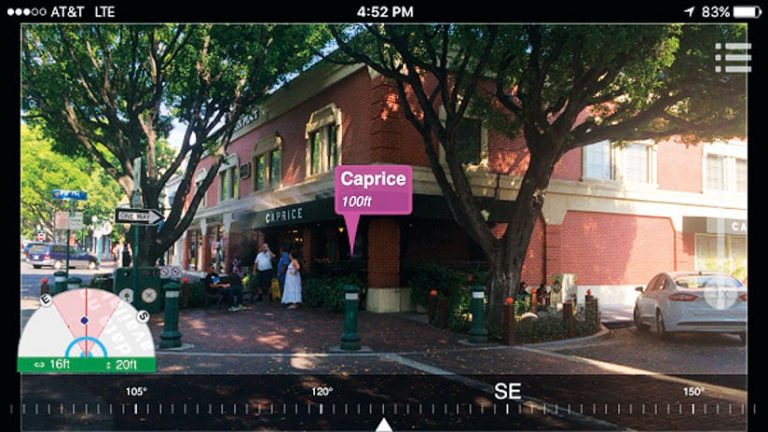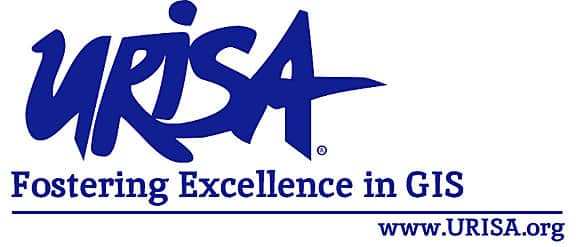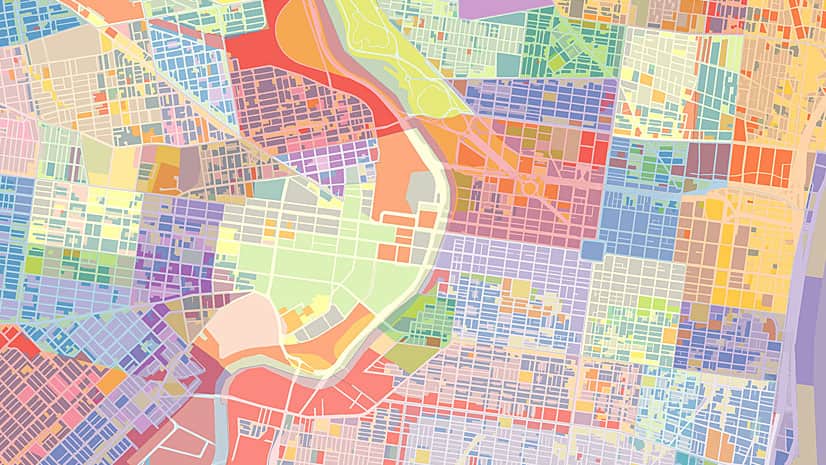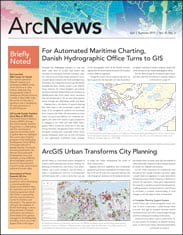During the plenary session at the GIS-Pro & CalGIS 2018 conference in Palm Springs, California, Esri president Jack Dangermond inspired the audience with vivid descriptions of the big-picture purpose of the GIS profession and GIS professionals’ role in what’s next for the world. He endorsed the Urban and Regional Information Systems Association (URISA) as a champion in successful GIS implementation, noting that it sets the vision for understanding the mission, provides leadership to geospatial professionals, and creates opportunities for collaboration within—and outside—the geospatial community. At the conclusion of his speech, Dangermond challenged the audience to use its collective success in applying GIS to help create and inspire what’s next.
No pressure, right?
Still very much inspired on my trip home, I had plenty of time to reflect on all this. In considering where this transformative technology could be most impactful for many people, I decided that the intersection of neurodiversity and geospatial technology was what’s next.
The Oxford English Dictionary defines neurodiversity as “the range of differences in individual brain function and behavioral traits, regarded as the part of normal variation in the human population (used especially in the context of autistic spectrum disorders).” While the focus of this article is on high-cognitive autism and similar profiles, it should be noted that neurodiversity includes all types of brain differences, such as attention deficit disorder (ADD), attention deficit hyperactivity disorder (ADHD), Tourette’s syndrome, dyslexia, and dyscalculia.
An Attractive Field for a Growing Population
In a 2018 report, the Centers for Disease Control and Prevention (CDC) revealed that the prevalence of autism in the United States is estimated at 1 in 59 births. The Autism Society of America reports that more than 3.5 million Americans live with an autism spectrum disorder. The prevalence of autism spectrum disorders also increased by 6 to 15 percent each year from 2002 to 2010, according to biennial numbers from the CDC.
Thus, most people probably know neurodivergent individuals. They may already be in your workplace, or, if not, they likely will be soon.

The geospatial field can be very attractive to neurodivergent job seekers who process visual information much more easily than aural information, want concrete work with tangible outcomes, and prefer limited social interaction with other professionals who are known for looking at people and data in unique and powerful ways. Additionally, more than guiding a career choice, geospatial technology has the potential to be the tools needed to help neurodivergent people change the world in ways that are important. Just as it is best practice to include an experienced utilities subject matter expert on utility projects, it is important to have neurodivergent people shepherd the development of solutions that support their own lives and livelihoods. When included, these individuals often provide a much-needed new perspective that takes projects and/or products to the next level.
Inspiringly, large corporations, such as Microsoft, SAP, and Dell, are showing that they understand the power of neurodiversity by not only hiring neurodivergent employees but also by taking the lead in manifesting just how valuable the neurodivergent population is to business success. This positive and transformational trend has the potential to expand in the geospatial technology arena.
To get started, organizations just need to implement a few measures to create what’s next for neurodiversity in the GIS workplace.
First, a Cultural Shift
Before diving into technical solutions, workplaces need to institute cultural shifts to successfully integrate inclusive practices into their workspaces and workflows. A few examples of how to do this include the following:
- Workplace Training
Including neurodiversity topics in orientation trainings for new staff and workshops for existing staff is an easy way for an organization to get its workforce up to speed on inclusion practices. This can be done in-house by trained staff or by outside experts.
Many organizations exist to provide support for neurodiversity training in the workplace. In New England, Massachusetts General Hospital is leading the way with its Aspire Works program, which offers training to both neurodivergent individuals and employers.
- Update Diversity Statements
A great way for an organization to let prospective and existing employees know that it embraces neurodiversity is to update its diversity statement. This helps organizations distinguish themselves as safe and inclusive workplaces for people of all kinds, which in turn attracts great talent. Check out SAP’s wonderful diversity and inclusion statement.
- Modify the Interview Process
Sometimes a neurodivergent person struggles with the interview process due to differences in social competency, anxiety, and other related challenges. With this in mind, many organizations are changing their interview processes to focus more on showcasing applicants’ abilities rather than putting their social competencies on display. Once an organization has neurodivergent people on staff, project and program managers can work together to augment their social competencies based on the work environment.
Ready for Geospatial Solutions
After a culture shift, which includes gaining a deeper understanding of neurodiversity and how to partner with neurodivergent professionals, organizations can then work on creating technical solutions.
- Augmented Reality
Some neurodivergent people have a hard time discerning certain details in their environments. Others experience all the details at once, which can be very overwhelming, especially when combined with anxiety. As a result, navigating around town to run errands or traveling to a worksite can be formidable.
When combined with robust geospatial data, augmented reality (AR) is a great tool to use to offer neurodivergent individuals specific information about points along a route, such as restaurants and post offices, but only when that information is in proximity. This type of location-dependent visual information is easier to process, thus lowering anxiety while creating a situational win for the user.
Esri Labs has an AR mobile app called AuGeo that allows ArcGIS users to bring point data into the app’s AR environment. To learn more, read the recent GeoNet blog post, “AuGeo: An Augmented Reality Mobile App for Your GIS Data.”
- Virtual Reality
One of the most important uses of virtual reality (VR) is to help neurotypical people understand what a neurodivergent person’s experience might be like. This virtual “stepping into someone else’s shoes” is very valuable for gaining insight into and building empathy for the amazing perceptions that the neurodivergent population brings to the world.
The bridge that connects the neurotypical and neurodivergent experiences to a familiar shared space, such as a public park or a common street intersection, is 3D geospatial information. From that bit of common ground, VR users can begin to appreciate the differences in experience.
- Indoor and Campus Navigation
Some neurodivergent people have a very difficult time figuring out where they are and get lost easily. Using traditional street-based navigation helps, but only if the user is going from point A to point B off of a street, rail, or other transportation network. Once that person arrives at the proverbial point B, navigation becomes much trickier, especially inside large, complex buildings and in campus settings.
Software such as ArcGIS Indoors could be used to create needed solutions for neurodivergent people with this problem.
So What’s Next for You?
Geospatial technology holds the key to what’s next for a very transformative and growing neurodivergent population. Are you inspired to help create what’s next?



